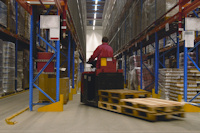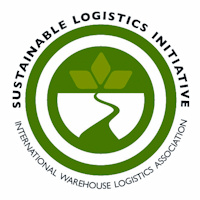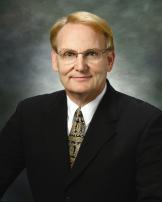 Thanks to the International Warehouse Logistics Association, warehouse-based third-party logistics providers in the U.S. and Canada can now have their sustainable supply chain practices independently verified in a way that will help them slash costs and attract new business in a changing world.
Thanks to the International Warehouse Logistics Association, warehouse-based third-party logistics providers in the U.S. and Canada can now have their sustainable supply chain practices independently verified in a way that will help them slash costs and attract new business in a changing world.
This year IWLA engaged an independent outside organization to help us create the Sustainable Logistics Initiative (SLI) to verify companies’ sustainable practices and educate their management about how to implement continuous improvements at their facilities.
Why is SLI important to the warehouse industry and to their customers? “By participating in SLI our members will have quantitative metrics to benchmark themselves and begin to make improvements,” said Linda Childs Hothem, the 2011-12 IWLA chairman, who deserves full credit for raising the idea and spearheading the program’s creation.
“Much the way LEED (Leadership in Energy and Environmental Design) brought structure to measure buildings energy efficiencies, SLI will bring structure to 3PL providers to measure their efficiencies,” said Hothem, who also serves as Chief Executive Officer of Pacific American Group and as Senior Advisor to Matson Global Distribution Services Inc., Oakland, Calif., in addition to being the first woman chairman in IWLA’s 120-year history.
Nothing could be more timely than this effort to expand these cost-saving practices further throughout the supply chain industry. This isn’t simply a matter of doing well by doing good. Corporate customers and the government are exerting increasing demands on 3PLs to demonstrate in concrete terms their commitment to sustainability. We are rapidly moving towards a time when your business could literally depend upon it – and in many cases we have reached that point already.
An increasing number of companies are demanding that suppliers of products and services provide evidence of sustainable practices when filing bids and RFPs. In addition, U.S. government agencies like the Department of Defense and the General Services Administration – which are the largest purchasers of 3PL services in the U.S. -- have mounted major efforts to assure sustainability among their vendors. These efforts serve as a bellwether indicator of the mounting interest – and indeed requirements – to inject sustainability best practices across all industries.
Wall Street is fueling the trend because many industry analysts are using sustainability measurements to assess the value of publicly-traded companies. Dow Jones already has a Sustainability Index and many companies are including sustainability sections in their annual reports.
In addition, Linda Hothem noted that she has seen first hand how implementing a well-designed and fully-functioning sustainability program can serve as a recruiting tool among today’s young supply chain professionals, who are looking for this commitment by companies when they are considering employers.
Consumers of logistics services have adopted organizational structures and precise statistical goals in support of supply chain sustainability and are looking to do business with providers that can supply them with metrics they can trust. They want to see more than simply signing a pledge – they want to see proof that this assurance has been translated into action. This is where SLI comes in.
SLI allows a warehouse-based 3PL to compete against itself to achieve continuous improvement by providing an output-based system to measure the improvements on a facility-by-facility basis.
This program will generate hard data showing real savings, objectively verified by an outside, independent organization called the Sustainable Supply Chain Foundation.
The Washington, DC-based SSCF identifies and assesses best practices and emerging technologies that advance sustainability in every aspect of supply chain management. It also provides consultation services, and funds and conducts research related to sustainability in global and domestic supply chain and transportation-related industries.
“Increasingly, sustainability is no longer a ‘nice to have/be’ option, but rather is a requirement for the entire extended supply chain and all of its partners,” SSCF Director Lisa Harrington said. Speaking of the IWLA SLI program, she said, “This is an example of an industry proactively taking steps to improve sustainability practice in a systematic and verifiable manner. It's leadership.”
The SSCF principals have the breadth and depth of necessary for this job. Richard Bank’s career spans more than three decades as an attorney, diplomat and international consultant. While working at the State Department, he developed and implemented international shipping policy, and supervised diplomatic activity regarding shipping, vessel-source marine pollution, supply chain and transportation-related trade practices and policies of foreign governments.
Bank also chaired the 2009 and 2010 Sustainable Supply Chain Summits, which were attended by major corporate, government and academic leaders engaged in sustainable supply chain issues.
Harrington has been involved in the supply chain management field for more than 25 years, both as a journalist and consultant with leading global corporations and government agencies on supply chain best practices. She is an adjunct professor of supply chain management at the Robert H. Smith School of Business at the University of Maryland, College Park.
In addition, the information gathered by the independent verifiers (all individual company information will be kept strictly confidential) will be used to develop best practices for the industry, which will inform future educational efforts.
How does SLI work? Verification will be confirmed for individual company facilities, not for the companies themselves. Participating facilities will have data verified in three main categories, which SSCF Director Bank sums up succinctly as: “Planet, people and profits.”
Environmental Responsibilities: These will include what are traditionally viewed as the “green” aspects of sustainability, such as measurements of electrical use, fuel and water consumption, and recycling.
For example, the electricity metric will measure kW/h per square foot/operational hours or FTEs hours on an annual basis for functions such as dry and refrigerated storage, conveyor and lift-truck equipment operations, and the light manufacturing and assembly services many of today’s warehouses provide for their customers. Water usage will be measured in gallons per facility square foot/FTE-hour.
Social Responsibilities: The main two of these indicators will be measurements of employee safety and community service. In regard to safety, the chief metric will be the OSHA 300 Total Recordable Incident Rate (TRIR).
Profit Responsibilities: This will encompass cost savings that have been generated by increased technological efficiencies and operational excellence.
In addition to undergoing the initial measurement and evaluation process, management must commit to ongoing evaluations to qualify for recognition of continuous improvement at these facilities. This includes regular participation by company employees in IWLA training and education opportunities, which offer the added benefit of providing tools for maintaining the trajectory of improvement to attain additional cost savings as well as program targets the companies help develop.
Utilizing sophisticated Internet-based tools, companies will establish a baseline for each indicator for each participating facility under its control. The company will set a voluntary reduction target for selected metrics, attend educational seminars that provide reduction strategies, implement the targeted reductions, and measure actual reductions against the pre-selected voluntary reduction targets.
I would like to emphasize that we have no intention of penalizing companies that already are doing the right thing by forcing them to set new but unfairly difficult goals to reach in comparison to firms that recognize they are in need of major improvement. IWLA member companies that have already taken the initiative to implement substantial sustainability improvement in the year or two before joining the SLI program will be able to include those improvements in their measurements.
To recognize the accomplishment of ongoing continuous improvement, facilities will be able to achieve three different levels of recognition as they proceed through the SLI process. These levels will be developed after the comprehensive gathering of data, so that when benchmarks are set, they reflect industry practices and are realistic, achievable goals.
To encourage the widest possible participation in SLI by warehouse-based 3PLs, regardless of their size, we have made a conscious effort to keep the costs down  as low as possible. Participants need to pay only an enrollment fee of $1,200 per facility for 24 months, and volume discounts are available for companies that sign up multiple facilities.
as low as possible. Participants need to pay only an enrollment fee of $1,200 per facility for 24 months, and volume discounts are available for companies that sign up multiple facilities.
The intellectual rigor contained in the measurements and the third-party verification by an outside, independent auditor gives the SLI instant credibility and will provide facts to answer the critical question of how to measure sustainable warehousing.
To learn more about IWLA’s Sustainable Logistics Initiative, along with other programs and activities for warehouse-based 3PL providers, visit www.iwla.com.

